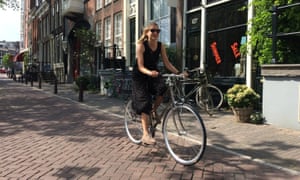If you’ve ridden a bike from a share network like Citibike in my hometown of New York, you probably retrieved the bike from a dock by clicking an app or QR code. At least, that’s what I’ve done the few times I’ve ridden such a bike.
The earliest official share programs—like the one started in La Rochelle, France half a century ago (and still running to this day) could not, of course, have operated in such a way because we didn’t have portable phones, “smart” or otherwise, and the technological networks didn’t exist. So, I imagine, operating the share system must have been more labor intensive, and its bikes more difficult to keep track of, than its current iteration.
In my previous paragraph, I wrote that La Rochelle can lay claim to the first “official” bike share program. That is to say, it was the first to be organized and sanctioned by a city or other government. The idea of bikes publicly available to anyone who wants to ride them predates La Rochelle’s program by a decade or so: During the mid-1960s, anarchists took abandoned bicycles, painted them white and left the Witte Fietsen on the streets of Amsterdam for anyone who wanted to ride them.
It seems that the spirit of that “Dutch treat,” if you will, has been revived in Montclair, New Jersey, only 33 kilometers (21 miles) or so from my apartment.
“Andy,” who would not give his full name, found a few bikes that were being thrown away. He took them home, repaired them and collected more bikes. He soon had a full garage.
One day, as he relates, he was talking to a co-worker who said getting to the bus he takes to work was ‘challenging.” “Andy”offered him one of the bikes, explaining that he could lock the bike up before he boarded the bus and hop back on it after returning.
 |
So was the Montclair Guerilla Bike Share program born. It takes bikes from the trash, clean-outs and donors, makes them rideable and leaves them in public spaces where people can unlock them with QR codes or by visiting the website. After riding it, you can lock it in a public place for someone else to unlock it.
“Andy” says he’s improved the stickers and other markings to make them easier to find. He’s also installed trackers on them, which helps to ensure that they’re not stolen and makes it easier to check on their conditions.
I am sure he knows about Citibike and other institutionalized bike-share programs. But I wonder whether he knew anything about the anarchists in Amsterdam who were leaving bikes on that city’s streets a decade before he was born.








